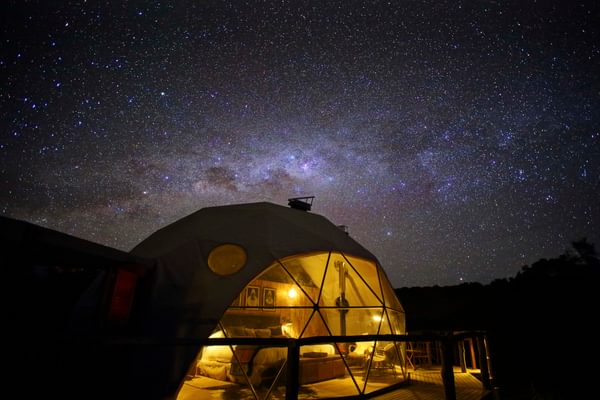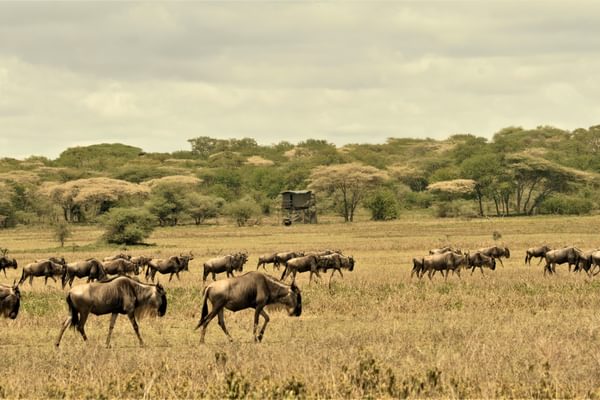Speak to a Tanzania expert today
and start planning your tailor-made holiday

Alistair


Can't decide where to go? Why not peruse some of our most popular destinations for inspiration then give us a call!

A diverse land brimming with superb safaris, pristine sandy beaches, towering snow-capped peaks and tropical underwater worlds is just waiting to welcome you

Australia offers vibrant cities, diverse landscapes, and iconic wonders like the Great Barrier Reef. New Zealand adds dramatic scenery, Maori culture, and relaxed charm. Together, they promise nature, adventure, culture, and warm hospitality.

If you're dreaming of an island getaway, look no further than the Caribbean with its gorgeous soft sand beaches and lively, diverse cultures.

Head to the amazing destination that is Central America, full of the knowledge of ancient civilizations, incredible mountains, and beautiful beaches.

Discover vibrant cultures, pristine beaches, and tantalizing flavours in the captivating travel haven that is East and Southeast Asia

Embark on a journey through the vibrant tapestry of India, Sri Lanka, and Bhutan—where ancient temples, lush tea plantations, and soaring Himalayan peaks promise unforgettable moments at every turn.

Picture yourself basking on sun-kissed beaches, sipping tropical cocktails beneath swaying palms —where crystal-clear lagoons and luxurious resorts cater to your every desire.

Experience world-class hospitality, mouthwatering cuisines, and the region’s deep-rooted cultural traditions for an unforgettable Middle East adventure.

Venture to the ends of the Earth and behold the icy majesty of polar landscapes. Discover pristine solitude, exhilarating expeditions, and breathtaking views that promise a memorable encounter with nature at its most dramatic

Journey into the heart of South America, where the rhythmic pulse of its vibrant cities meets the majesty of the Amazon rainforest and the timeless wonder of ancient civilizations.

The South Pacific is a paradise of turquoise waters, white-sand beaches, and vibrant island cultures. From adventure and natural beauty to pure relaxation, each island offers its own unique charm and welcome.

From the soaring plains of the Southwestern USA to the stunning landscapes of the expanses of Canada, visit some of the most impressive scenery in the world

If you are looking for a trip to knock iconic locations off your bucket list, check out our buck list recommendations

From the graceful stride of giraffes at sunrise to the echoing roars of lions beneath starlit skies, each of our safaris promises an unforgettable dance with nature.


Our family holidays are a perfect opportunity to create lasting memories, whether exploring new destinations or simply enjoying quality time together. From adventure-filled escapes to relaxing beach retreats, they offer a chance to reconnect and unwind away from daily routines.

Our luxury holidays offer the finest experiences, from exclusive resorts and private villas to tailor-made adventures with impeccable service.

For those seeking adventure beyond the usual tourist trails, our off-the-beaten-track trips take you to some of the world’s most remote and untouched destinations, where authentic cultural encounters and breathtaking landscapes await. Let us craft your unique journeys that few travellers ever experience.

For the ultimate beach escape, we offer luxury holidays to some of the world’s most stunning coastal destinations, from the white-sand shores of Antigua to the turquoise waters of Zanzibar.

For those who crave excitement and exploration, our adventure holidays take you to some of the world’s most thrilling destinations, whether trekking through Patagonia, summiting Mount Kenya, or kayaking past icebergs in Antarctica.

Interested in something a bit more focused? How about a horse-riding holiday through Argentina? Or a photography safari? Look through our Special Interest holiday selection for inspiration

Our wildlife holidays invite you to step into unique ecosystems and experience amazing animal encounters. Whether spotting majestic tigers in the jungles of India or marvelling at polar bears in the Arctic, each trip promises awe-inspiring moments steeped in the magic of nature.

Our small group tours offer the perfect balance of expert-guided exploration and personal experience, taking you to incredible destinations with like-minded travellers. Whether it's a wildlife safari in Botswana, a cultural journey through Vietnam, or a chef-led expedition through India, our carefully curated itineraries ensure an intimate, enriching, and hassle-free experience.

Sustainability travel is at the core of what we do and a guiding principle in every choice we make as a business. Let us help you make sustainable travel choices

Read about what we do to make a difference

One of the most important parts of our commitment to responsible travel is protecting our clients, and it is a part that we take extremely seriously.

Not sure what's best for which time of year? Check out our expert-written guides

Looking for some expertise on your destination? Have a look through our selection of guides and articles written by our destination experts

Looking for more inspiration? Read from our range of hundreds of articles from our travel specialists, local guides, and personal travel tales.

Our mission is to make every holiday special. We will do this whilst specifically aiming to minimise the environmental impact of our activity and maximise our opportunity to influence others to do the same.
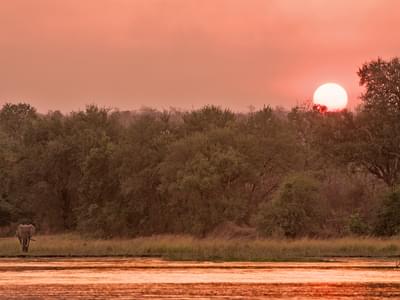
A safari in Tanzania is the stuff of dreams. It’s the quintessential African experience, whether you’re visiting for dramatic landscapes, world-class wildlife encounters or to witness the great migration. I’m not sure anything could surpass the wonder of seeing thousands of wildebeest chasing the rains across the vast plains of the Serengeti, although tracking chimps and discovering that lions can climb trees come a close second.
Serengeti National Park
If you’re coming to Tanzania to gaze in awe at the annual migration of over 2 million wildebeest, then the Serengeti is the place to go. Probably the most famous protected area in all of Africa, it’s the largest national park in the country and has some of the highest ever recorded wildlife concentrations.
The Serengeti is one of the best spots to see the famous Big 5, as well as cheetah racing across the plains, elephants trundling along the periphery and vultures circling overhead. It doesn’t get much more ‘African’ than this, whether you are on a Tanzania honeymoon or a family adventure, visiting the Serengeti is a must.
The short yellow grasses of the endless plains make it easier to spot more elusive game. The Serengeti also boasts one of the densest leopard populations on the continent, as well as a healthy mix of predators and scavengers, following along after the migration in search of easy pickings.
There is a wide range of lodges from simple, tented lodges to camps which move with the migration to ensure you get the best view to high-end lodges with all the bells and whistles, perfect for a luxury Tanzania safari.

Ngorongoro Crater
This ancient volcanic caldera is easily one of the most impressive geological features in Africa. The Ngorongoro Crater in Northern Tanzania is the largest dry caldera in the world, and home to a wide variety of game, including the Big 5, hippos and wild dogs to name a few. The range of ecosystems here is immense, with everything from rolling hills and woodlands to grassland plains and soda lakes full of pink flamingos.
Despite the rather variable weather, Ngorongoro is one of the most popular areas to visit in Tanzania, and as a consequence it does become rather busy with other safari vehicles. Yet if you stay in one of the crater lodges, you can get ahead of the game by being first in and last out of the caldera.
In the wider Ngorongoro Conservation Area (a UNSECO World Heritage Site) the volcanic landscape continues with smaller craters, Great Rift Valley cliffs, and Lake Natron, a soda lake that shimmers pink and orange in the sun. Olduvai Gorge is found here too, an important archaeological site famous for the hominid fossil discovery of our earliest known ancestors who lived here nearly 2 million years ago. It’s not all about the animals.

Selous Game Reserve
Selous may be the largest game reserve in Africa, but it’s relatively little visited thanks to its remote location. Those who put in a little effort to get here are rewarded with a vast peaceful wilderness almost to themselves. The game-covered plains, butterfly-filled woodlands and numerous hippo pools are a photographers dream, and the colourful array of birdlife is enough to tempt even the most reluctant of bird watchers, with kingfishers, herons and bee-eaters amongst the treats in store.
Lion sightings are excellent, because unlike their counterparts in other reserves they hunt during the day, making the prospect of seeing a kill much higher than elsewhere in East Africa. A good place to see them is along the Rufiji River, which runs along the north of the park. Here you can take boat trips to search for storks, baboons and crocodiles, whilst elephant and buffalo are frequently seen coming down to the water for a drink.
The best time to visit is between July and October when plains game is abundant. Sometimes herds of up to 50 giraffes can be seen gathering at the lakes during the hottest part of the day, as well as bushbuck, eland and kudu. Meanwhile in the riverine forests black and white colobus and samango monkeys can be seen jumping around in the treetops.

Tarangire National Park
Elephants are the main attraction in Tarangire National Park, with up to 3,000 present during the peak months. Large congregations of the gentle giants gather along the riverbanks in search of water, alongside other animals, such as kudu, eland, buffalo and wildebeest. Here you’ll also come across the more unusual local antelope species, like the gerenuk and fringe-eared oryx. This smorgasbord attracts the lions, leopard and hyena, so it’s a great all-round wildlife experience. The birdlife is pretty spectacular too, with everything from kites and falcons to storks and orange-bellied parrots.
Tarangire is a little off the beaten track, and remains an untouched wilderness, as fewer visitors make it as far as this quieter park in Northern Tanzania. It’s a seasonal park with good game concentrations between July and October, but pretty empty for the rest of the year when the animals migrate out of the area.

Lake Manyara National Park
If you’ve ever wondered if lions can climb trees then come to Lake Manyara National Park to find out. Seeing is believing after all. Famous for its unusual tree-climbing lions, this untouched African paradise is made up of forests, grasslands and swamps, with over two thirds of the land being covered by water. Which is perfect for the thousands of pelicans and flamingos that reside here.
The wildlife is concentrated on the strips of land alongside the lake, making it relatively easy to spot all year round. The largest population of baboons in the world is also found here, as well as decent sized groups of elephant, hippo and impala. Canoe safaris are possible when water levels allow, giving a rather unique and thrilling perspective of the park.
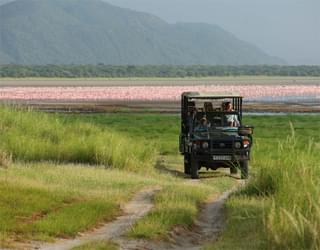
Ruaha National Park
Another largely undiscovered park, Ruaha is wild, remote and hence a little harder to reach. It’s the sort of place where you’ll encounter very few other visitors. Located in the heart of Tanzania, the landscape of Ruaha is dry and dramatic, with baobab trees dotted around the hills, and rocky escarpments overlooking the grasslands down below.
Wildlife viewing here is superb and best between July and November when it is dry and the animals gather around waterholes. There are excellent populations of lion, leopard and cheetah, as well as hyena and wild dog, thanks to the prolific game found here.
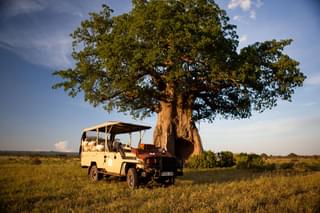
Mahale Mountains
Mahale Mountains is a peaceful national park in western Tanzania is simply magnificent, with its dramatic and imposing forested mountain slopes reaching down towards the crystal clear waters of Lake Tanganyika. It receives few visitors due to its remote location, yet is one of the best places in Africa to see chimpanzees in the wild. There are around 1000 individuals living here, including one habituated troop, which allows humans to observe them from close quarters as they forage, groom and play in the forest. It’s a very intimate world-class wildlife experience.
If you fancy a bit of a break from the traditional safari, it’s possible to go sailing, kayaking and snorkelling in the lake in search of the stunning array of colourful fish that live in these waters.

Gombe National Park
Located to the north of Lake Tanganyika, Gombe is Tanzania’s smallest park and another popular spot to go in search of chimps. Jane Goodall made the chimpanzees here famous with her ground-breaking behavioural research in the 1960s. Despite this the park is still little visited, again because of its remote location. Today there are around 100 chimpanzees, and taking a guided walk to see them interacting in their communities is a privilege few safari-goers ever get to see.
Chimpanzees aren’t the only primates in Gombe. Visitors also often see vervet monkeys, olive baboons and the red colobus amongst others. The shore of the lake is also a great place to keep an eye out for birds, including the elusive Peters’ Twinspot.
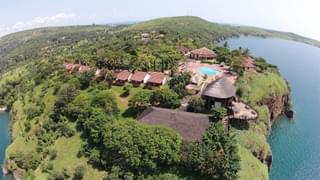
For more inspiration, take a look at our 26 best safari holiday ideas or our favourite African honeymoon ideas.
If you’d like to arrange a holiday to Tanzania, then give our safari experts a call today on 01768 305715 or fill in our enquiry form.
Every holiday we make it tailored to your requirements and created from scratch so we can create the perfect safari for you.
and start planning your tailor-made holiday


What can I say….my son and myself had the most wonderful time in Kenya thanks to the first-class itinerary that Ben and Louise put together for us. We spoke with Ben many times to ensure he ‘got it right’. This was our 2nd visit to Kenya, and it certainly lived up to our expectations and memories. Nothing was too much trouble for all the staff; we cannot have been looked after any better. I would highly recommend Far and Wild; they are so knowledgeable and have personally visited the lodges and areas. We are already planning another visit, and we cannot wait.
I have just returned from the most amazing trip to Tanzania, booked with Far & Wild. Everything went so smoothly from the first time I spoke with them. The planning was great, the itinerary was perfect for us, and the lodges were amazing. We spent 10 nights with an amazing guide, travelling through Northern Tanzania and even got to see the migration, which was a lifetime ambition of mine. This wasn't our first safari, so we were nervous as to how it would compare, but it was spot on. I will certainly be using them again to book our next trip....we're thinking of a relaxing beach stay next time to get over the excitement of safari!
Just back from another amazing F&W organised trip to Namibia with the family (8 adults). Having been there before, Alistair tailored our trip to include our favourite locations and added a new one for us, which we loved.The quality of accommodation and guiding, activities, food and drinks was exceptional throughout. It was good value for the level of luxury we had.
We had a wonderful trip to São Tomé and Príncipe - a small island nation in the Gulf of Guinea with paradise (almost empty) beaches and jungle forest. It was all well organised by Far and Wild and we stayed at a great combination of different types of resorts/hotels. We really recommend this for those who want to experience a pristine destination with few other tourists and friendly and welcoming people. The islands also feel very safe. At Principe, there are no dangerous animals, snakes or whatever, and it was great to be able to hike in the jungle without being very conscious of where to put your hands and feet. Go before everyone else does!
Back home again, basking in the joys of a superb safari. Every aspect you arranged for us, including linking up with Mack Air and Wild Horizons locally to transport us. The choice of camps was ideally situated, comfortable, in good surroundings, and with excellent wildlife on the doorstep and throughout the wider country. The service staff in each looked after us very well, catering was excellent, and the game guides were professional, knowledgeable and helpful. You made us happy, and we recommend you to similar safari enthusiasts with confidence.
Far and Wild went above and beyond to make sure my trip to Zambia was special. I would definitely recommend them and their services to anyone wanting to travel to Africa.
Lovely holiday at the amazing Almanara on Galu beach, a beach like no other. Far and Wild excelled themselves from beginning to end of our holiday in beautiful Kenya.... What a country!,
Wow! These guys are amazing. Can’t recommend them highly enough. Friendly AND efficient! Sorted out our trip (last minute and lots of different family member needs, sorry!) in record time and everything worked like clockwork. Trip of a lifetime to the Masai Mara. Will be back (and use F&W again!)!
It was a dreamy holiday on the Kenyan Coast - Far and Wild, their efficiency and professionalism allowed us to relax and be the happiest family alive !! We cannot fault them, their care and understanding of what we wanted from a holiday ensured we had the most memorable trip. We will be booking with them again for sure!
Get travel tips directly to your inbox every week
Give us a call on 0203 111 1315 or fill in the form below and we’ll be in touch.
